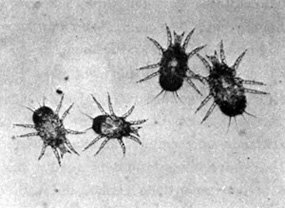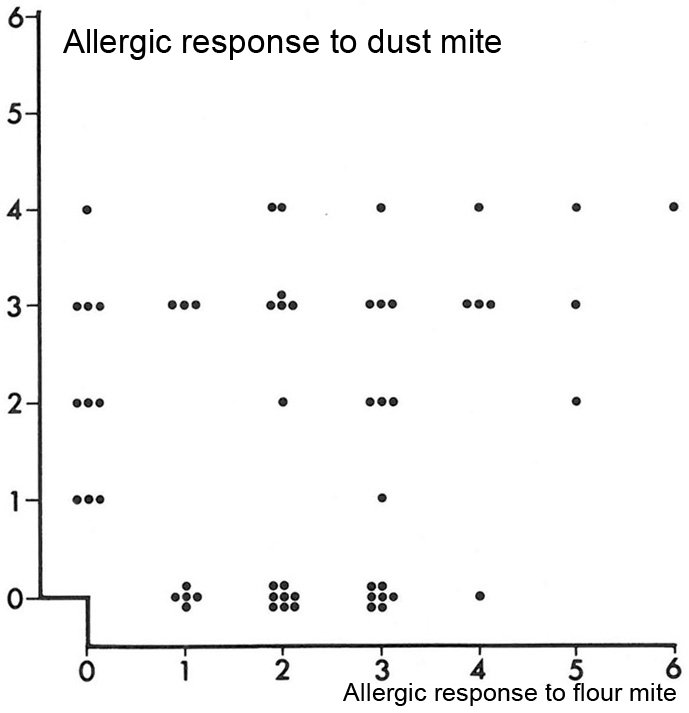
Even though a person can be or become allergic to any insect acting as pests in food, it is only a small number of insect species that actually matters in relations to allergies. Those are the species that a person often comes into contact with, and their closest relatives with whom they share allergens. Allergies to food pests are almost exclusively tied to the dust particles that are inhaled when handling food. Allergic reactions include snoozing, watery eyes and sometimes even asthma. Allergic reactions appear immediately after coming into contact with dust from foods and are typically the result of remains of mites and sometimes also granary weevils or moths.
Heavy goods such as hay, straw, rape and animal feed potentially give off large amounts of dust from mites. If predisposed to allergies, one should avoid working with these goods. Many people suffer from allergic reactions to house dust mites and will therefore also react to any small amount of mites in dusty foods. The house dust mites that cause allergic reactions do not live in food, but they share the same allergens with the mites that do. It is those shared allergens that people react to.
As far as we know today, there is no particular allergen-risk by eating or drinking food containing pests. Allergic reactions to food are not always caused by the food, but can also be a reaction to the particles that occur when food is digested.
Skin disorder can occur in relation to contact allergies. An example of this is people, who work with prunes or cheeses that contain mites, getting rashes. Those rashes are said to be caused by mites, but it has never actually been proved. Many beetle larvae have barbed hairs. The hairs break easily and find its way to human skin where it can cause allergic reactions and inflammation.





